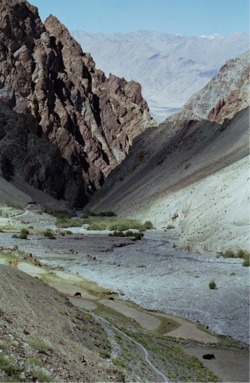 |
 |
The spectacular Ladakh valleys © UNESCO/ TMI |
 |
Leh, the capital of Ladakh, is dominated by the picturesque palace of the former Ladakhi royal family, together with the Victory Fort, built to commemorate an important 16th century Ladakhi victory over neighbouring kingdoms. From Leh, many of the regionís surrounding white-washed Buddhist hill monasteries, or gompas, may be visited, including the Hemis Gompa, one of the best-known. Most tourists visiting Ladakh do so through treks organized through Delhi-based travel operators, tourism thus bringing few benefits to local communities. As a result, local people have few incentives to participate in the conservation of the areaís cultural and natural resources, and there is a lack of active policy support for sustainable tourist development or for the development of community-based tourism, such as home-stays and locally based businesses. The Mountain Institute, an international NGO with programmes in the Himalayas, Andes and Appalachian mountain ranges, is the UNESCO partner in the Ladakh region of Northern India, together with the Snow Leopard Conservancy, an NGO dedicated to protecting the regionís rich biodiversity. The aim of the UNESCO / Mountain Institute / Snow Leopard Conservancy project is to promote community participation in the areaís tourism development, helping to generate employment opportunities and income-generating activities for local people. Training is being given in the development and management of tourist home-stays, as well as in the skills needed for local people to become cultural and nature guides. A Code of Best Practice is being drawn up for home-stay development in the region, and awareness of community-based tourism opportunities promoted.The methodology used is that developed by the Mountain Institute for Community-Based Tourism for Conservation and Development, an approach that has proved its value in many mountainous regions of the world. Russian version
|

